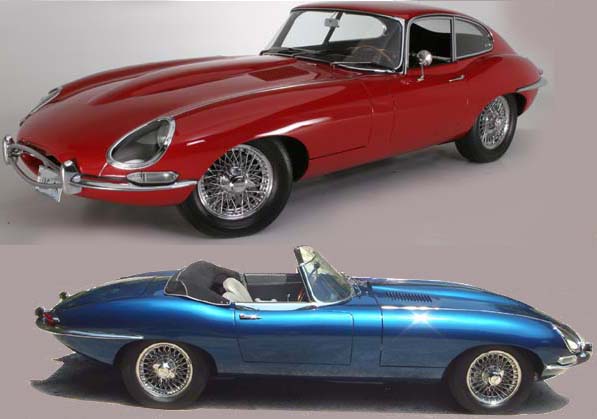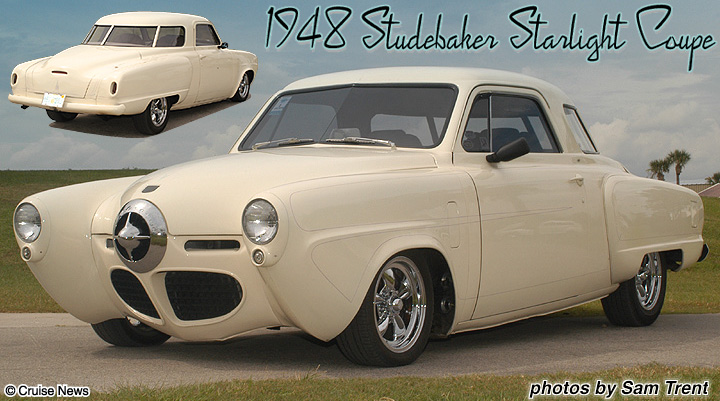For the sake of airport limo drivers everywhere, we need a new Continental. These days, with names like MKT, MKZ, MKS and MKX, nobody knows what the heck Lincoln even sells. The Continental's got the kind of long history (originally launched as a 1940 model) that equals instant name recognition, and the lack of enthusiasm for large, FWD luxury cars that spelled its demise in 2002 has turned around again. With 55 model years to mine, designers shouldn't be stuck for ideas. I remember myGrandfather having a car like this but it was black and the inside with red! I thought my family was the mob!
I remember myGrandfather having a car like this but it was black and the inside with red! I thought my family was the mob!
 I remember myGrandfather having a car like this but it was black and the inside with red! I thought my family was the mob!
I remember myGrandfather having a car like this but it was black and the inside with red! I thought my family was the mob!
We haven't had a good CUV on the market for ages — meaning Coupe Utility Vehicle. Why the El Camino and not the Ford Ranchero that inspired it? Ask any search engine, and look for the number of results that pop up. Go to Bing, type in 'El Camino' and check out more than 242 million results. Type in 'Ford Ranchero' and check out just over 4.5 million. To put this in perspective, I pulled the random word 'newt' out of my you-know-what, Binged, and got 55 million hits. (FYI, turns out newts are cute and kinda spunky-looking. Wouldn't that make a fine name for a new economy car? Definitely way better than, say, Yaris.) Like a vehicular mullet, the El Camino is all business in the front with a party in the back.

Otherwise known as the Thing, VW stopped producing this military vehicle for civilians in 1980. Yes, it's hideous, but look at it a while longer. Isn't it starting to grow on you? With a rear-engine platform, manual transmission and flat-four engine, it's not like it would have any direct competition. VW's often negative reputation for poor reliability, earned or not, could use a boost from the durable, off-road-capable Thing. It would definitely need some tweaking to meet current safety standards, including a design change to offer greater distance between the front seat occupants and the windshield, but it's distinctive and fun, and I for one am always looking for another excuse to go topless.

While we're on the Volksbandwagen, let's bring back the Type2, aka the Transporter, Kombi or 'that hippie van.' Another rear-engine variant, this Veedub can take some credit for pioneering the modern passenger van. Updated versions of the Type 2 remain in production in some markets as a passenger van, cargo van or pickup that bears little resemblance to the famous Bus of the 60s and 70s. With most Gen-Xers clueless about anything that was around before they were, we could just let the valuable 20-something demographic think they discovered it. And where are our teens supposed to find a little lovin' anyway? In the Grand Caravan? In a crossover? Nah. It's been long enough. Let's bust out the psychedelic paint and bring back the shaggin' wagen.

Stunning. Enzo Ferrari called it the most beautiful car ever made, and it's among only six cars to be including in Manhattan's Museum of Modern Art's permanent design collection. (Mind you, one of the others is a 2002 Smart, so take that distinction with a grain of salt.) Its two-seater, grand tourer looks have held up so well, it would take barely a tweak to make it completely contemporary today. With the E-Type marking a 50th anniversary this year, it's the perfect time to announce a comeback. Sadly, pesky crash test standards might entail too many changes to maintain the purity of form for which the E-Type is so rightfully revered.

More than 1.7 million Corvairs were produced between 1960, when Motor Trend named it its Car of the Year, and 1969. (My mom even had one, the only car she ever owned before abandoning the whole concept as 'too stressful.') It was overhauled in 1965 and pioneered the Coke bottle styling that would appear at GM for years to come. Then Ralph Nader killed it with his 1965 book, Unsafe at Any Speed. The lack of a front anti-sway bar had resulted in more than 100 lawsuits, a problem that GM later fixed. Production fell from 200,000 in 1965 to 15,000 by 1968. It was exonerated in a Texas A & M University safety report in 1972. Too little, too late.
Nothing says let's go back to the future like a DeLorean, and who makes better sports car than the Irish? Built in Belfast for the American market in 1981 and '82, the only model produced by John DeLorean's DeLorean Motor Company, the DMC-12 featured gullwing doors and unpainted stainless steel body panels. After the original concept vehicle provided unsuitable, DeLorean brought in Lotus founder Colin Chapman. The DeLorean may actually have done all right if it weren't for DeLorean's 1982 arrest for drug trafficking, a charge of which he was later cleared. It may have been odd, ugly and impractical to get into or out of, but I bet with some modern engineering and more horsepower, it would do all right today.

By 1960, when North Americans began to realize that a.) big cars were in fact really big; b.) they could use a second car and c.) the woman of the family didn't necessarily want to pilot an aircraft carrier, the Detroit Three began to produce compacts, including the Corvair from Chevrolet, the Valiant from Chrysler, and the Falcon courtesy of Ford. Both reliable and affordable, the nifty-looking Falcon was a hit from the start, with more than a million sold by the end of year two. The Falcon's Mustang sibling overshadowed it by 1964, and the Falcon never recovered. It held on until 1970 when declining sales and an inability to comply with safety standards spelled its demise.

Described by one auto journalist as 'uglier than the south end of a northbound mule,' it nevertheless pioneered and popularized the wedge shape and sharp angles that would appear in many a subsequent performance car. It was among the first to offer a passenger cabin-forward design that left space for a bigger engine, something of which that same auto journalist heartily approves. (That auto journalist was me, by the way.) The futuristic styling was especially appreciable from above, which didn't really do anyone any good, but the scissor doors necessitated by its width were nifty and are still in use by Lamborghini today. A polarizing design that was nevertheless a work of art, it would be a sure-fire hit with Lambo fans.

The Vega, launched as a 1971 model, was by 1974 among the top-10 bestselling American cars. Engine problems, poor build quality and corrosion would scuttle it by 1977, after a series of redesigns and recalls had in fact fixed said problems, but it held enough initial promise to be worthy of an automotive mulligan. Not only was its attractive and versatile (it would be offered in hatchback, notchback, wagon and panel delivery forms), but its suspension, live rear axle design, low centre of gravity and neutral steering offered decent handling characteristics. In 2008, Popular Mechanics called it 'one of GM's great debacles.' In 2010, they called it 'the car that nearly destroyed GM.' I'm not holding out much hope on this one, but the hatchback sure is cute.

Maybe it's just my age and fondness for Miami Vice, but for my money (if I had any), there's never been a Ferrari like it. Its long production run from 1984 to 1996 was at its heyday in the '80s, where it fit right into the decade's indulgent, yuppie lifestyle. Along with neon, skinny jeans and high tops, Footloose and The Thing, the '80s are back, so why not bring the Testarossa back with them? Featured on the cover of Road & Track nine times in five years, the Testarossa featured a 4.9-litre mid-mounted flat-12 that offered 361 lb.-ft. of torque and 390 hp. Now, if only we could find the Thompson Twins ...

Where have all the steaming piles of poo-poo gone? Where once we had the Chevette, Pony, Yugo and Pinto to kick around, today's small cars are replete with nifty features and smooth-running, good-handling engineering. Where's the fun in that? We journalists need a model we can laugh at and universally pan, so let's bring back the Pacer. A frequent inclusion on Internet lists of ugliest and most ill-conceived cars, the Pacer was dubbed by Car and Driver as the 'Flying Fishbowl,' but its jellybean styling is an unmistakable '70s icon. Then again, so is Fat Elvis and Andy Gibb's chest hair. Bring back the fun! Bring back the Pacer!
I think this car nearly killed me when I was 4?? 

The Starlight coupe was the halo model for Studebaker from 1947 to 1952. Since the maker has been defunct since 1967, we're going to have find someone else to produce it. I suggest Hyundai, since they're on a hot streak and have seemingly unlimited resources. The Starlight coupe featured a wraparound window system that provided panoramic views, and was criticized for looking eerily similar coming and going, but it was certainly recognizable. The revolutionary design wasn't picked up by other marques, who favoured a pillarless hardtop design, but I can't help but think that, in a parallel universe somewhere, it caught on and the future/present of automotive design evolved in an utterly different direction.
 WOW, I love this car!
WOW, I love this car!
Not a model but rather a body style, the woody first appeared in the 1930s, when wood frames filled with wood or painted metal panels on the rear body work were actually structural. Safety regulations in the 1950s finally rendered them obsolete, but the esthetic limped on. The Griswolds immortalized the woody with their ill-fated Family Truckster in National Lampoon's Vacation, and Ford tinkered with some side grooves on the Flex recently, but let's take it all the way and start splashing some woody goodness around a little. I'm lookin' at you, Mini. While we're at it, let's offer woody variants of the Edge, Venza (it could only help), all minivans and, for a little past-meets-future excitement, the Nissan Leaf.
 Mary's Dad had this car and I can remember being in the back with her while he did business in the summer at the food markets.
Mary's Dad had this car and I can remember being in the back with her while he did business in the summer at the food markets.
No comments:
Post a Comment